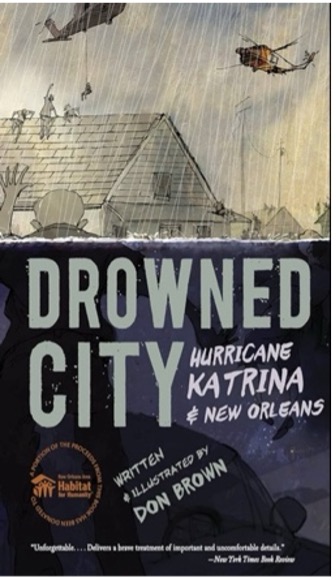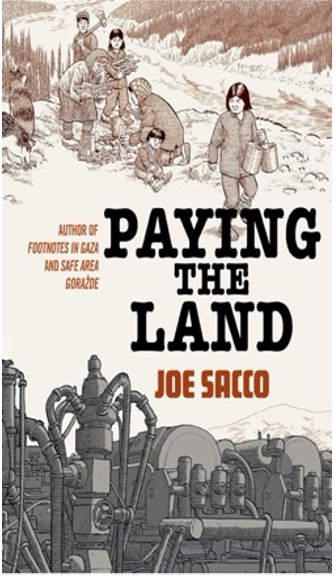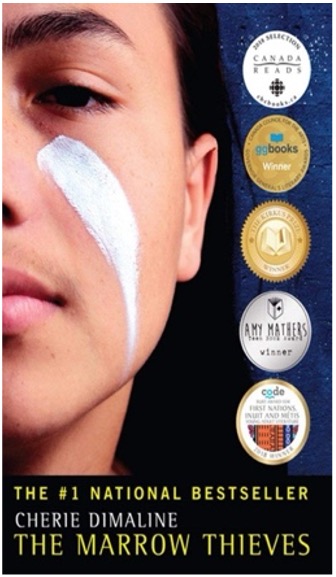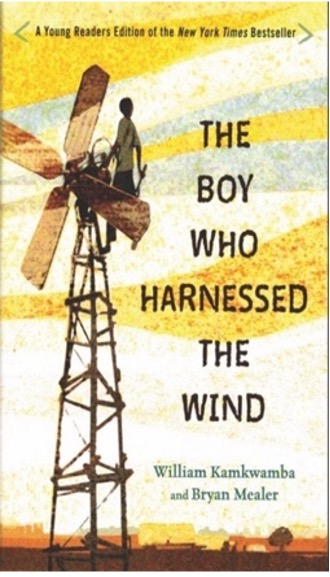Environmental Health and Justice
Introduction
Environmental Health
The American Public Health Association (APHA) defines Environmental Health as “The branch of public health that focuses on the relationships between people & their environment; promotes human health and well-being and fosters healthy and safe communities” (APHA).
Environmental Justice
The US Environmental Protection Agency defines environmental justice as “the fair treatment and meaningful involvement of all people regardless of race, color, national origin, or income, with respect to the development, implementation, and enforcement of environmental laws, regulations, and policies.”
According to Dr. Robert Bullard, Father of the Environmental Justice Movement, “Environmental justice embraces the principle that all people and communities have a right to equal protection and equal enforcement of environmental laws and regulations.”
17 Principles of Environmental Justice
Drafted by delegates of the First National People of Color Environmental Leadership Summit, held in Washington, DC on October 24-27, 1991. This summit was a pivotal step in formalizing the modern environmental justice movement and these principles established the framework for advocacy.
Tools
EJ Screen: Environmental Justice Screening and Mapping Tool
This tool enables the mapping of location-specific environmental and demographic data.
Agency for Toxic Substances and Disease Registry (ATSDR) Environmental Justice Index (EJI)
The EJI maps data on the cumulative impacts of environmental hazards. It looks at health effects over time based on the environmental burden, social and health vulnerabilities in a community. The Agency for Toxic Substances and Disease Registry (ATSDR) describes the tool as the “first national, place-based tool designed to measure the cumulative impacts of environmental burden through the lens of human health and health equity.”
Centers for Disease Control (CDC) Public Environmental Health Tracker
This tool maps local data on environment, hazards, health topics and health effects. Information support is provided to help users make sense of the data.
Resources
NIEHS Community Engaged Research and Citizen Science
This site discusses how community-engaged research and citizen science are being used to address environmental issues.
NIEHS Environmental Health Disparities and Environmental Justice
Describes programs NIEHS has in place to address environmental health disparities.
NIEHS Environmental Health Perspectives
This is a monthly journal of environmental health research and news supported by NIEHS.
Climate Change and Human Health Literature Portal
This is a database of curated, peer-reviewed research on the topic.
NIEHS/National Toxicology Program Resource List (pdf)
This list shares resources mentioned in the NNLM Webinar, Free Information Resources from the National Institute of Environmental Health Sciences recorded on November 15, 2022.
National Center for Environmental Health
National Environmental Public Health Tracking
This site provides information on CDC’s program and provides access to the National Environmental Public Health Tracking Network.
This site provides an overview of several key topics of concern for the environment. It also includes location-specific topic information.
Climate Change & Health Equity and Environmental Justice
This site provides information about the work HHS is doing through the Office of Climate Change & Health Equity and the Office of Environmental Justice.
Advancing Environmental Justice
APHA's National Environmental Health Partnership Council, with support from CDC’s National Center for Environmental Health and Agency for Toxic Substances and Disease Registry, hosts the Advancing Environmental Justice through Technical Assistance Mini-Grants Program. This site features resources resulting from the project.
World Health Organization (WHO): Environmental Health
United Nations Environment Program (UNEP)
Organization for Economic Co-Operation and Development (OECD): Environment Focuses on country-specific policies around environmental health.
Essential Learning
Bullard, R. D. (2000). Dumping in Dixie: Race, class and environmental quality (3rd ed.). Westview Press.
Originally published in 1990, this book highlights the challenges of five Black communities in the fight for health equity and justice.
Bullard R. D. Mohai P. Saha R. Wright B. & United Church of Christ. (2007). Toxic wastes and race at twenty: a report prepared for the united church of christ justice & witness ministries. United Church of Christ.
Toxic Waste and Race, first released in 1987, was study done by the United Church of Christ Commission for Racial Justice. The report confirmed that racial demographics of communities played a significant role in the location of toxic waste dumps. Toxic Wastes and Race at Twenty, released in 2007, examines the progress over twenty years.
Coolsaet, B. (2021). Environmental justice: key issues. Routledge.
This text is a solid introduction to the interdisciplinary nature of environmental justice and includes perspectives on gender, colonization, race, intersectionality as well as energy, food, urbanization and labor.
Gilio-Whitaker D. (2019). As long as grass grows: the indigenous fight for environmental justice from colonization to standing rock. Beacon Press. This book covers the American Indian history of the environmental justice movement.
Hanna-Attisha M. (2019). What the eyes don't see: a story of crisis resistance and hope in an American city (One World trade paperback). One World.
Chronicles one pediatrician’s discovery of Flint, Michigan children’s exposure to lead in the city’s water supply and her fight for justice and accountability. Through her story, she takes a critical look at systemic causes of environmental health inequities. Supplemental Resource: Teacher's Guide for Student Discussion (from One Maryland One Book, Maryland Humanities)
Morrone M. (2020). Ailing in place environmental inequities and health disparities in Appalachia. Ohio University Press.
This book explores the relationship between health outcomes and the environmental conditions that create them.
Taylor D. E. (2014). Toxic communities: environmental racism industrial pollution and residential mobility. New York University Press.
Environmental sociologist Dr. Dorceta Taylor’s book is an examination of environmental racism and its impact on communities. Supplemental Material: Instructor’s Guide (from NYU Press) (PDF)
Ahearn, A. (Host). (2021 November 23). Environmental Justice: The Past, Present and Future of the Movement. [Audio podcast episode]. In Environmental Health Chat. NIEHS Partnerships for Environmental Public Education (PEPH).
This podcast is an interview with Robert Bullard about the modern environmental justice movement.
American Public Health Association. (Producer). 2022. Amplify Your Story: Environmental Justice Storytelling and Sharing [Video].
This webinar demonstrates methods and strategies for sharing your community’s experiences around environmental issues.
Barnett, N. & Wright, A. 2022. Environmental Health and Justice: a brief primer. NNLM.
Downton, K. & Mayo, A. 2021. Citizen Science: Gearing Up for Discovery [MOOC]. EdX.
NNLM. (Producer). 2022. Your Environment. Your Health. Free Resources from the National Institute of Environmental Health Sciences (NIEHS). [Video].
NNLM. (Producer). 2023. Finding Environmental Health Information on PubMed. [Video].
NNLM. (Producer). 2022. Libraries as Hubs for Citizen Science: Partnering with Academia to Improve the Health of Communities. [Video].
There are several organizations doing work with communities around environmental health and justice. Here is a select list:
Deep South Center for Environmental Justice
Founded by Dr. Beverly Wright in 1992 in collaboration with local environmental groups and universities in the Southern region, this organization provides education, training, leadership development and advocacy around environmental health and justice issues.
This organization focuses on protecting children from air pollution and climate change.
Indigenous Environmental Network (IEN)
The IEN was established to build awareness, advocacy, and capacity to affect policies around the health and protection of people, land, air, water and natural resources.
WE ACT for Environmental Justice
This organization “organizes and empowers low-income people of color to build healthy communities for all” (WE ACT website).
Other Resources
 | Brown, D. (2015). Drowned City. Houghton Mifflin Harcourt. | |

| Fajardo, P., Tardy-Joubert, S., & Roudeau, D. (2021). Crude: A Memoir. The Pennsylvania State University Press. Crude is a graphic novel that tells the story of the battle of the indigenous Ecuadorians against the energy company, Texaco/Chevron, for their destruction in the Amazon. Oil waste polluted their environment, leading to sickness and death within their communities. Children became ill, miscarriages and cancer rates grew. It was devastating for those involved. This story follows a teenager, Pablo Fajardo, who witnessed the tragedy and later became the lead counsel for the Union of People Affected by Texaco (UDAPT). This memoir explores themes of environmental destruction and human rights. | |
| Lemieur, M. (2016). Flint Water Crisis. AKPress Flint Water Crisis by Meg Lemieur is a unique comic that sheds light on the public health crisis in Flint, Michigan when the water source was contaminated with lead. This comic shows the symptoms those affected would face and how many would live with effects for the rest of their life. This includes hair loss, hearing loss, dizziness, and more. It provides insight on how residents were denied clean water. It even goes into the protests and shows how many are fighting for their futures against environmental racism. | ||

| Sacco, J. (2020). Paying the Land. Metropolitan Books. Paying the Land by Joe Sacco is a graphic novel that explores the relationship between the Dene tribe and the Canadian government and their issues over land use and resource extraction. Sacco provides insight on the impact that mining and resource extraction have on the Dene. This includes job opportunities, but also challenges such as affecting residential schools and forced relocation. Through the storytelling and artwork of this graphic novel, Sacco can show the struggles that the Dene face, while also highlighting their efforts to protect the land and their heritage. | |
| Sohini, K. (2022, February 21). Breathless. The Nib. https://thenib.com/breathless/ Breathless by Kay Sohini is a short comic that highlights the disproportionate impact of climate change on vulnerable communities, including minorities and people with disabilities. Through illustrations and statistics, the comic explores how environmental issues like air pollution can be a challenge for those who are already marginalized. Breathless promotes the need for environmental justice to address the impact of climate change and its impact on different communities. |

| Butler, O. E. (2019). Parable of the Sower. Grand Central Publishing Group. Parable of the Sower is a novel set in a future America where climate change and economic crises have left marginalized communities, particularly people of color, at risk for environmental health concerns. This novel highlights a theme of resilience as it follows fifteen-year-old, Lauren Olamina, as she navigates through this challenging environment, striving for a better future. | |

| Dimaline, C. (2017). The Marrow Thieves. DCB Young Readers. The Marrow Thieves is a dystopian novel set in a future world devastated by global warming where people have lost the ability to dream. The only ones who can still dream are the Native Americans. It is their marrow that is the cure to this chaos and is the reason the Native Americans are being hunted. The marrow is symbolic of the Native Americans’ knowledge, connection to the land, and way of life, as it is the reason they can still dream. This symbolic story also provides insight into the exploitation of the Native communities and lands. It will follow a fifteen-year-old and his companions as they attempt to survive during this challenging time. | |

| Kamkwamba, W., & Mealer, B. (2009). The Boy Who Harnessed the Wind LP. Harper Collins The Boy Who Harnessed the Wind is a memoir that tells the story of a boy, William Kamkwamba, in Malawi who builds a windmill to bring electricity to his village. It explores his journey as he creates a solution to a critical issue, while also recognizing the impacts of climate change. | |

| Hagan, E. (2022). Don’t Call Me Hurricane. Bloomsbury YA. Don’t Call Me Hurricane is a young adult novel that follows the story of Eliza Marino, who is passionate about climate change and protecting her town. The story takes place during a time when Eliza’s town is recovering from a hurricane. As they deal with fear and trauma, Eliza builds a budding romance with Milo Harris. It explores the socioeconomic differences within the community, showing how different individuals recover and rebuild. |
Cameron, J., Horner, J., N. D. (2009) AVATAR. USA/UK.
Avatar is a film that takes place on a moon called Pandora, where humans are threatening the environment and the indigenous Na’vi people. This film explores various themes such as environmental destruction, as humans exploit natural resources, impacting the planet and its inhabitants. Through the Na’vi people, Avatar demonstrates the importance of the connection between a community and their environment.
Glustrom, A. (2020). Mossville: when great trees fall. Passion River.
This documentary follows the residents of the historic Black community in Louisiana as they face environmental destruction from nearby industrial plants. The film provides insight into the impact of pollution on the community’s health and how they fought against powerful corporations. Through their personal stories, this film shows how environmental hazards affect groups of people in different ways.
Fox, J., Gandour, M., Adlesic, T., & Sanchez, M. (2010). Gasland: Can you light your water on fire? New York, NY, Docurama Films.
This film explores the communities affected by the natural gas drillings, also known as fracking. It exposes how fracking has led to contaminated water supplies, air pollution, and health issues. These challenges are in communities that are often economically disadvantaged and affected by environmental contamination and health risks.
Daniel, I., & Page, E. (2020, March 26). There’s Something in the Water. 2 Weeks Notice
There’s Something in the Water is a film that explores environmental racism and its impact on Indigenous and African women of Nova Scotia, Canada. It focuses on how they are disproportionately affected by the pollution and toxic waste. This film shows how these women fight to protect their communities, land, and futures (Daniel & Page 2020).
Bibliography
Brown, D. (2015). Drowned City. Houghton Mifflin Harcourt.
Butler, O. E. (2019). Parable of the Sower. Grand Central Publishing Group.
Cameron, J., Horner, J., N. D. (2009) AVATAR. USA/UK.
CNN. (2015) Katrina: The Storm That Never Stopped, from https://www.youtube.com/watch?v=qeSYkezcihg.
Daniel, I., & Page, E. (2020, March 26). There’s Something in the Water. 2 Weeks Notice
Dimaline, C. (2017a). The Marrow Thieves. DCB Young Readers.
Fajardo, P., Tardy-Joubert, S., & Roudeau, D. (2021). Crude : A Memoir The Pennsylvania State University Press.
Fox, J., Gandour, M., Adlesic, T., & Sanchez, M. (2010). Gasland: Can you light your water on fire? [Widescreen]. New York, NY, Docurama Films.
Gilio-Whitaker, D. (2019). As Long as Grass Grows. Beacon Press.
Glustrom, A. (2020). Mossville: when great trees fall . Passion River.
Hagan, E. (2022). Don’t Call Me Hurricane. Bloomsbury YA.
Kamkwamba, W., & Mealer, B. (2009). The Boy Who Harnessed the Wind LP. Harper Collins
Lemieur, M. (2016). Flint Water Crisis. AKPress
Sacco, J. (2020). Paying the Land. Metropolitan Books.
Sohini, K. (2022, February 21). Breathless. The Nib. https://thenib.com/breathless/
Do you have feedback on this guide? We’d love to hear it! Please send feedback to April Wright.
